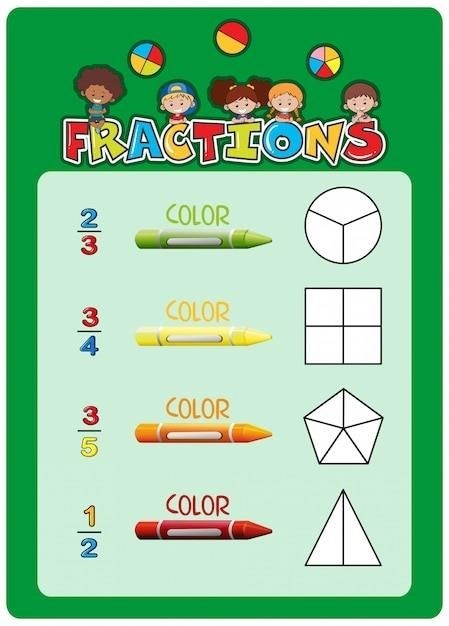estudio biblico pdf
Estudio Bíblico PDF⁚ A Comprehensive Guide
Embark on a journey of faith with Estudio Bíblico PDFs, your
comprehensive resource for exploring biblical teachings. These PDFs
offer accessible, in-depth studies, perfect for personal reflection or
group discussions, fostering a deeper understanding of scripture.
Estudio Bíblico PDF resources provide a wealth of accessible material for
engaging with scripture. These resources often include downloadable PDFs
containing various Bible studies, guides, and commentaries designed to
enhance understanding and facilitate spiritual growth. They cater to diverse
learning preferences, offering structured lessons and thematic explorations
of key biblical concepts.
Many websites and online platforms offer free Estudio Bíblico PDF
downloads, making theological education accessible to a wider audience;
These resources are invaluable for both individual study and group
discussions, fostering deeper insights into the Bible’s teachings. The PDFs
often incorporate interactive elements, such as questions for reflection and
additional passages for further exploration, promoting active learning and
personal application.
Whether you’re a seasoned theologian or a new seeker, Estudio Bíblico PDF
resources provide a convenient and comprehensive way to delve into the
richness of scripture and strengthen your connection with God’s word.
Availability of Free Bible PDF Downloads
The digital age has ushered in unprecedented access to religious resources,
including a plethora of free Bible PDF downloads. Numerous websites and
online libraries offer complete Bibles, study guides, and theological
commentaries in PDF format, catering to diverse languages and
denominations. This accessibility democratizes biblical study, enabling
individuals worldwide to engage with scripture regardless of their financial
circumstances.
These free resources often include features such as keyword search,
cross-referencing, and customizable layouts, enhancing the reading and
study experience. Many organizations and ministries provide these PDFs as
part of their outreach efforts, aiming to spread the teachings of the Bible
and foster spiritual growth.
However, users should exercise caution and critically evaluate the source
and content of free Bible PDF downloads, ensuring alignment with their
theological beliefs and seeking guidance from trusted religious leaders or
scholars when needed. Despite this caveat, the availability of free Bible
PDFs remains a valuable tool for personal and communal spiritual
enrichment.

Key Themes in Estudio Bíblico PDFs
Estudio Bíblico PDFs explore central themes like salvation through Christ and
finding inner peace. They often delve into foundational gospel principles,
offering insights into faith, repentance, and the transformative power of
belief.
The Path to Christ and Finding Peace
Many Estudio Bíblico PDFs focus on the transformative journey of finding
Christ and experiencing inner peace. These resources often emphasize God’s
desire to save humanity, as highlighted in John 3⁚16, 1 Timothy 2⁚3-6, and
2 Peter 3⁚9. The path involves recognizing the free gift of salvation
offered through Christ’s sacrifice.
These PDFs explore the essential requirements of repentance and faith,
guiding individuals toward a deeper understanding of their relationship with
God. They delve into the practical steps one can take to align their life
with Christian values, fostering a sense of purpose and fulfillment. Through
scriptural analysis and insightful commentary, these studies aim to
illuminate the way to lasting peace and spiritual contentment.
These resources underscore that true peace is found in accepting Christ’s
love and grace. They provide guidance on navigating life’s challenges with a
renewed perspective rooted in faith.
Understanding the First Rudiments of the Gospel
Estudio Bíblico PDFs often dedicate sections to explaining the first
rudiments of the Gospel, providing a foundational understanding of Christian
doctrine. These resources delve into the core beliefs that form the basis of
Christian faith, such as the nature of God, the person and work of Jesus
Christ, and the role of the Holy Spirit.
These PDFs often explore the essential elements of salvation, including
repentance, faith, and baptism. They provide clear explanations of these
concepts, helping individuals grasp the significance of each step in their
spiritual journey. The resources may also cover topics such as the authority
of Scripture, the importance of prayer, and the principles of Christian
living.
By providing a solid foundation in these fundamental truths, Estudio Bíblico
PDFs empower believers to grow in their faith and understanding. These
resources encourage a deeper exploration of Scripture, fostering a lifelong
pursuit of knowledge and spiritual maturity. They serve as valuable tools
for both new and seasoned believers seeking to strengthen their faith.

Using Estudio Bíblico PDFs Effectively
To maximize the benefits of Estudio Bíblico PDFs, approach them with
prayerful consideration and an open mind. Engage actively with the text,
cross-referencing scriptures and reflecting on the teachings for personal
growth.
The Importance of the Holy Spirit in Bible Study
The Holy Spirit plays an indispensable role in unlocking the profound
truths within scripture. As emphasized in various Estudio Bíblico PDFs,
divine illumination is essential for comprehending God’s word. The
content of these studies is valuable, but it requires the fire of God’s
Spirit to be truly effective, guiding us into deeper understanding.
Without the Holy Spirit’s guidance, Bible study can become a mere
intellectual exercise, devoid of spiritual insight. He empowers believers
to grasp the hidden meanings, apply biblical principles to their lives, and
experience genuine transformation. Through the Spirit’s presence, scripture
becomes a living, breathing source of wisdom.
The Spirit convicts, teaches, and reminds us of all that Jesus said,
enabling a richer, more intimate relationship with God. Therefore, seek
the Holy Spirit’s presence before and during your Estudio Bíblico PDF
sessions, inviting Him to reveal the depths of God’s love and purpose for
your life.
Transformative Bible Studies⁚ Engaging with God’s Word
Transformative Bible studies, facilitated by resources like Estudio Bíblico
PDFs, offer a pathway to profound spiritual growth. These studies
encourage active engagement with God’s word, prompting reflection,
application, and a deeper understanding of biblical truths. By delving into
scripture, individuals can experience a renewal of their minds and a
transformation of their lives.
The key to transformative study lies in moving beyond passive reading and
embracing an interactive approach. This involves asking thoughtful
questions, seeking connections between different passages, and considering
the historical and cultural context. Engaging with commentaries and study
guides, often found within Estudio Bíblico PDFs, can further enhance
comprehension.
Ultimately, the goal is to allow God’s word to penetrate the heart,
leading to practical changes in behavior and attitudes. Transformative
Bible studies are not merely about acquiring knowledge; they are about
encountering God and allowing Him to shape us into His likeness.

Specific Topics Covered in Estudio Bíblico PDFs
Estudio Bíblico PDFs delve into specific topics such as eternal life,
knowing Christ, and evangelistic studies based on the Gospel of John.
These resources offer focused insights and guidance for deeper understanding.
Studies on Eternal Life and Knowing Christ
Explore the profound concepts of eternal life and knowing Christ through
dedicated Estudio Bíblico PDFs. These studies offer a roadmap to
understanding salvation, examining key scriptures that illuminate the path
to eternal life. Discover the transformative power of a personal
relationship with Jesus Christ, gaining insights into His teachings and
promises.
Delve into detailed analyses of relevant biblical passages, exploring the
meaning of grace, faith, and repentance. These PDFs often provide thought-
provoking questions and reflections, encouraging deeper contemplation and
application of these principles in daily life. Understand what it truly
means to be “born again” and how to cultivate a life that reflects Christ’s
love and teachings. Through these studies, individuals can strengthen their
understanding of the Christian faith, fostering a closer connection with
God and a greater appreciation for the gift of eternal life through Jesus
Christ. Examine various perspectives on salvation and its implications for
the present and future.
Evangelistic Studies Based on the Gospel of John
Uncover powerful evangelistic tools with Estudio Bíblico PDFs focused on the
Gospel of John. These studies are designed to effectively communicate the
core message of Christianity, highlighting Jesus Christ as the Son of God
and the savior of humanity. Explore key passages that reveal Christ’s
divinity, His miracles, and His teachings on salvation.
These PDFs often provide clear explanations of complex theological concepts,
making them accessible to both new believers and those unfamiliar with the
Bible. Delve into the encounters of Jesus with various individuals,
analyzing the lessons of faith, forgiveness, and love that emerge. Discover
practical strategies for sharing the Gospel with others, using the Gospel
of John as a foundation. Examine the themes of light versus darkness, truth
versus falsehood, and life versus death, central to John’s portrayal of
Christ. These studies equip individuals to confidently share their faith and
invite others to experience the transformative power of Jesus Christ. They
also offer a valuable resource for deepening one’s own understanding of the
Gospel message.

Additional Resources in Estudio Bíblico PDFs
Beyond core studies, Estudio Bíblico PDFs offer supplementary materials.
These may include maps, timelines, character profiles, and concordances,
enriching your understanding of the biblical context and enhancing your
study experience.
Guidance for Studying the Four Gospels
Estudio Bíblico PDFs provide invaluable guidance for navigating the rich
narratives of Matthew, Mark, Luke, and John. These resources offer insights
into the unique perspectives of each Gospel writer, highlighting their
distinct audiences and theological emphases. Understanding these nuances is
crucial for a comprehensive grasp of Jesus’ life, teachings, and
significance.
The PDFs delve into the historical and cultural contexts surrounding the
Gospels, shedding light on the world in which Jesus lived and ministered.
They explore key themes, such as the Kingdom of God, discipleship, and
the nature of salvation, providing a framework for interpreting the text.
Additionally, these resources offer practical tips for effective Bible
study, encouraging readers to engage with the Gospels actively and
prayerfully. By utilizing these tools, individuals can unlock a deeper
appreciation for the transformative power of the Gospel message and apply
its teachings to their own lives.
The Doctrine of Tithes⁚ Usage and Application
Estudio Bíblico PDFs address the often-debated doctrine of tithes, offering
a comprehensive exploration of its biblical origins, historical context, and
practical application in contemporary Christian life. These resources delve
into the Old Testament roots of tithing, examining its purpose within the
Levitical system and its connection to God’s provision for the Israelites.
The PDFs also analyze New Testament perspectives on giving, exploring
whether the principle of tithing remains relevant for believers today. They
address common questions and concerns regarding the usage and allocation of
tithes within the church, emphasizing the importance of financial
integrity and responsible stewardship. Furthermore, these resources provide
guidance on applying biblical principles of giving in a way that honors God
and supports the ministry of the church, while also encouraging generosity
and compassion towards those in need. By engaging with these studies,
individuals can gain a clearer understanding of the biblical basis for
tithing and its implications for their personal finances and involvement in
the Christian community.












